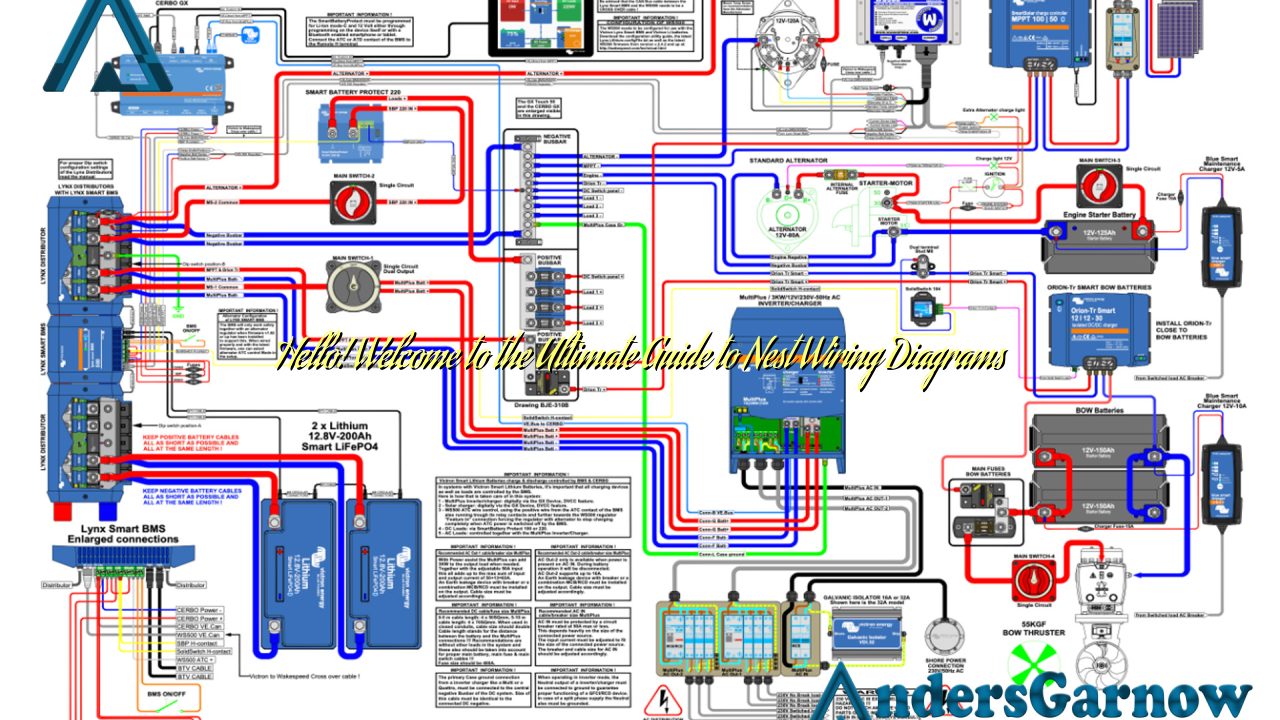Are you looking to install a Nest thermostat but unsure about the wiring process? Look no further! In this comprehensive guide, we will walk you through everything you need to know about Nest wiring diagrams. From understanding the basics to exploring alternative options, we’ve got you covered. So, let’s dive in!
1. Understanding Nest Wiring Diagrams
Before we get started, let’s first understand what a Nest wiring diagram is. It is a visual representation of how the wires in your heating and cooling system should be connected to your Nest thermostat. This diagram ensures that your Nest thermostat functions properly and effectively controls your HVAC system.
One of the key advantages of the Nest wiring diagram is its simplicity. The diagram clearly labels each wire, making it easy for even a novice DIY enthusiast to follow along.
However, one drawback of the Nest wiring diagram is that it may not cover every possible HVAC system configuration. In some cases, you may need to consult a professional or refer to your system’s user manual for additional guidance.
2. Basic Nest Wiring Diagram
The basic Nest wiring diagram consists of several wires, each serving a specific purpose. Let’s take a closer look at each wire:
| Wire Color | Purpose |
|---|---|
| Rh or Rc | Power supply for heating or cooling |
| W | Heating control |
| Y | Cooling control |
| G | Fan control |
| C | Common wire for power supply |
By following the basic Nest wiring diagram, you can ensure that your Nest thermostat operates smoothly.
3. Advanced Nest Wiring Diagram
In some cases, your HVAC system may have additional wires that require specific connections. An advanced Nest wiring diagram can accommodate these extra wires, providing you with more control over your system. Here are some common additional wires:
| Wire Color | Purpose |
|---|---|
| E | Emergency heating control |
| O/B | Heat pump control for cooling or reversing valve |
| Aux/W2 | Secondary heating control |
| Y2 | Second stage cooling control |
It is essential to refer to your specific Nest thermostat model’s wiring guide to ensure the correct connection of these additional wires.
4. Alternative Options
If you encounter compatibility issues with the Nest wiring diagram or require a more customized setup, there are alternative options available:
1. Consult a Professional: An HVAC professional can assess your system and provide expert guidance on wiring your Nest thermostat.
2. Nest Pro Installer: Hiring a Nest Pro Installer ensures a hassle-free installation process, as they are trained and certified by Nest.
3. Manufacturer Support: Reach out to the manufacturer of your HVAC system for assistance with wiring your Nest thermostat.
Remember, it’s crucial to follow the correct wiring instructions to avoid damaging your system or voiding any warranties.
5. Frequently Asked Questions (FAQs)
Q: Can I install a Nest thermostat myself?
A: Yes, you can install a Nest thermostat yourself if you feel comfortable working with electrical systems. However, if you have any doubts, it’s best to seek professional help.
Q: What if my HVAC system has different wire colors than the Nest wiring diagram?
A: Don’t worry! The color coding may vary between systems. Focus on matching the functions of each wire rather than the colors.
Q: Can I use the Nest wiring diagram for all Nest thermostat models?
A: The basic wiring principles remain the same for most Nest thermostat models. However, it is essential to refer to your specific model’s wiring guide for any variations.
In Conclusion
Understanding Nest wiring diagrams is crucial for a successful thermostat installation. By following the provided diagrams and referring to alternative options when needed, you can enjoy the benefits of a Nest thermostat while maintaining the efficiency of your HVAC system. Remember to prioritize safety and, when in doubt, consult a professional. Happy wiring!

